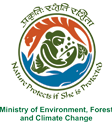HWC mitigation in India
Human-Wildlife Conflict
Human-wildlife conflict (HWC) refers to the negative interaction between people and wild animals, leading to negative impact on people or their resources such as human life and injury, crop, livestock and other properties or even their emotional well-being, and on the wild animals or their habitats. HWC brings economic losses to the communities living on the forest edges in India, to the tune of millions of rupees every year.
The primary drivers of HWC include human population growth, industrialization, infrastructure development, urbanization and increased use of natural resources, which require and bring about land use changes and exert pressures on human and natural ecosystems in the form of increased pressure on natural habitats for livelihood dependence, decreased habitat space and quality for wildlife, blockage of corridors for certain species, invasive species, resulting in increased frequency of animals moving out in human-dominated landscapes. This leads to situations of increased incidents of human-wildlife encounters resulting in loss of life, injury to people, livestock and wild animals, property and crop damage.
HWC often involves many wildlife species that are recognised as keystone and umbrella species, and removal of individuals of such species due to HWC, changes the ecosystem and ecosystem service- that are the very foundation of human well-being and livelihood sustainability- in an irreparable manner. Such situation has the potential to undermine the existing and future conservation efforts, and also hinder achievement of both Sustainable Development Goals (SDGs) including SDGs 1, 2, 3, 5, 8, 9, 12, 14 and 15; and global and national Biodiversity Targets.
Human-Wildlife Conflict Mitigation
Human-Wildlife Conflict Mitigation refers to interventions to reduce the negative impact of human-wildlife interaction on people or their resources and on the wildlife or their habitats; it includes strategies to address the drivers and pressures of conflict, reducing the vulnerability of people and wildlife, and institutional capacity development.


